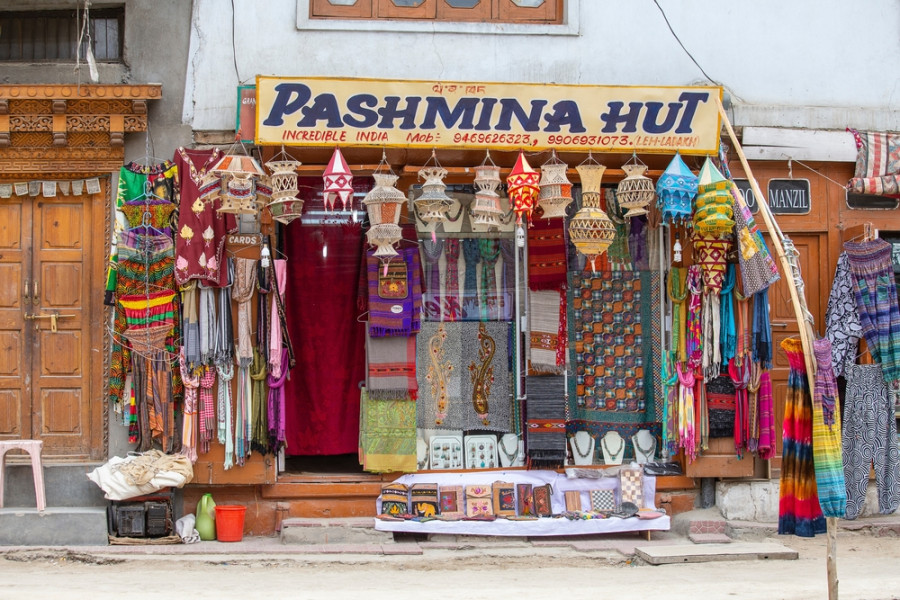Columns
Why geographical indication is vital
Adopting it as a mark of distinction and quality will protect Nepal’s local indigenous and niche products.
Roshee Lamichhane
Beyond just fashion outrage, the recent controversy surrounding Prada’s sandal, which bore a striking resemblance to India’s traditional Kolhapuri sandals—officially recognised with a Geographical Indication (GI) in 2019—highlighted the urgent need to preserve cultural heritage through GI certification. Products originating from a particular place and having characteristics or a reputation associated with that place are labelled with a GI. Such indications are intricately linked to cultural identity. To be identified as a GI, a tag must clearly state that the product originates from a particular place. GI also guarantees customers that the product is genuine and pure by preventing counterfeiters from misusing the name. Without GI protection, international competitors may even exploit our identity and reputation.
Over 100 well-known agricultural products, including the Marpha apple, Jumla simi (beans), Mude aaloo (potato), as well as artisanal crafts and foods like Bhaktapur Juju Dhau (curd), Gundruk (fermented leaf or silage of broad leaf mustard) and mandarin oranges, are among Nepal’s many distinctive products. However, none have official GI recognition, which risks losing their unique characteristics that could grant exclusive trademark rights based on geographic origin. For instance, producers once believed that Nepali basmati rice was solely ours, but now India and Pakistan can legally claim it elsewhere. In 2020, Nepal filed a protest letter with the EU to defend its Basmati rice against India’s GI application, highlighting its unique origin, diversity and cultural importance.
Evidence for the need for GI
The Kashmiri Pashmina was granted a GI in 2005, attesting that it secures craftsmen’s rights and possesses unique features of the Kashmir valley. Fake Pashmina vendors were forced to leave or disclose machine-made scarves following Kashmir’s GI rules. GI protection also restores trust by allowing buyers to pay higher amounts for guaranteed quality while preserving the hard-won reputations of craftspeople. In an information-asymmetric market, research indicates that consumers unaware of traditional handlooms will benefit from GI certification, which verifies the product’s authenticity and quality. By allowing them to establish associations, set quality standards and register their goods, GI protection for Pashmina protects regional craftspeople from exploitation and guarantees that buyers support legitimate manufacturers. Additionally, it publicly acknowledges the Pashmina cultural heritage.
Authenticity, a source of competitiveness for developing economies, rural development, environmental sustainability, consumer awareness, artisan rights, facilitating export, cultural legacy and influencing consumer choice and decisions make GI protection necessary. By associating items with certain locations, GI tags ensure that only products manufactured there that adhere to conventional standards can use the trademark. Another notable example is the Penja pepper from Cameroon, whose market price has increased by over seven times since 2008, and currently fetches a good price. Such examples demonstrate the kind of premium Nepali producers may receive for our distinctive crops, as the community’s identity and intangible wisdom are embodied in many GI items.
The Jamdani saree, a handwoven muslin garment, was registered as a GI product in Bangladesh for financial gain and as a representation of the country’s pride and traditional workmanship. With around 55 products, from Shital Pati cane mats and Jamdani sarees and hilsa fish to local mangoes and dairy products—now protected under its 2013 GI Act—Bangladesh has taken a lead in GI protection after India. India is home to 605 GI-tagged products across categories, increasing both market value and national cultural identity. Similar results can be used to inform policies supporting rice sustainability in Nepal. We can also draw lessons from native rice in Thailand, where Sangyod rice production in the GI area is more profitable than in other areas.
GI status has the power to change rural economics and safeguard names. Because GI-certified products frequently fetch higher prices in both domestic and foreign markets, studies show a direct link between GI recognition and rural affluence. As it encourages a sense of territorial distinctiveness, it has become an essential instrument for rural rehabilitation in Turkey over the last five years. Government and communities work together to implement GI, significantly influencing rural economies and livelihoods. In addition to preserving regional agriculture, well-planned GIs promote social, political and economic transformations that can revitalise rural communities through creative governance. Combining economic, environmental and social factors, GIs not only improve local sustainability and food systems but also act as accelerators for long-term sustainability by preserving traditional production and marketing practices.
Challenges and way forward
Nepal is just beginning to realise its potential. GI protection is managed through collective trademark registration, which requires adherence to production quality standards, as Nepal lacks a specific GI law. The country has complicated legal processes, including extensive documentation. What’s more, low awareness among stakeholders (mainly producers and consumers), ambiguity in defining the “origin” and interstate dispute over boundary definition, budgetary limitations, and challenges in preventing counterfeiting, particularly in international and digital marketplaces, are other obstacles to enforcing GIs. Stronger legislation, increased public awareness and concerted support are needed to overcome these issues and preserve GI authenticity to help producers.
Manufacturers must be on the lookout to ensure that no one illegally registers a GI for their goods in the nation or nearby jurisdictions. Academics have also suggested that Nepal’s cannabis might be eligible for GI protection, which could help it reach its full medicinal potential. The same goes for niche products like Yarshagumba and Palpali dhaka. It is crucial to have a detailed GI Act and implement regulations.
GIs support sustainable rural development by empowering local economies, conserving traditional knowledge and protecting the cultural heritage of indigenous populations. By differentiating products according to distinctive features, GIs create niche markets and stimulate economic growth. This is demonstrated by the rising price of goods like Basmati rice, Thanjavur paintings and Darjeeling tea, as well as by the expansion of jobs, such as the doubling of orange farmers in Nagpur.
Nepal must enact GI recognition laws and establish effective administrative processes. This contains precise rules for registration, enforcement and quality control. As important is educating producers and consumers regarding the value of GI. GI-certified items have been successful in other South Asian countries. Adopting it as a mark of distinction and quality to protect Nepal’s local indigenous and niche products will benefit craftspeople, manufacturers (producers) and consumers.




 10.12°C Kathmandu
10.12°C Kathmandu.jpg)















